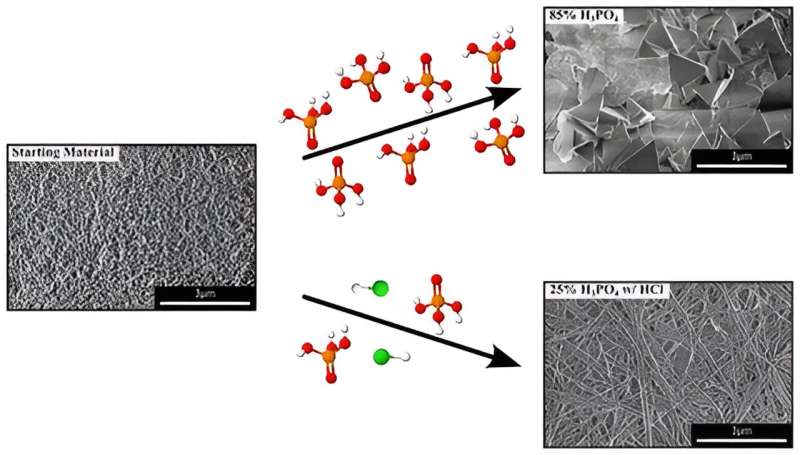This article has been reviewed according to Science X's editorial process and policies. Editors have highlighted the following attributes while ensuring the content's credibility:
fact-checked
peer-reviewed publication
trusted source
proofread
Chemists find new way to rid boron nitride nanotubes of impurities

Very strong, light materials that can withstand extremely high temperatures could usher in next-generation spacecraft, enhance current devices or enable the development of new biomedical imaging or hydrogen storage applications, among others.
To this end, Rice University scientists in the lab of Angel Martí have uncovered a new way to make high-purity boron nitride nanotubes, hollow cylindrical structures that can withstand temperatures of up to 900°C (~1,652°F) while also being stronger than steel by weight.
According to their new study published in Chemistry of Materials, Rice researchers figured out how to get rid of hard-to-remove impurities in boron nitride nanotubes using phosphoric acid and fine-tuning the reaction.
"The challenge is that during the synthesis of the material, in addition to tubes, we end up with a lot of extra stuff," said Kevin Shumard, a chemistry doctoral student and lead author on the study. "As scientists, we want to work with the purest material we can so that we limit variables as we experiment. This work gets us one step closer to making materials with a potential to revamp whole industries when used as additives to metals or ceramic composites to make those even stronger."

The "extra stuff" that usually mars the quality and usefulness of the nanotubes are boron nitride cages—hollow sphere-shaped structures that encapsulate boron particles. A paper published in the Journal of the American Chemical Society in 2013 that showed phosphoric acid acted as a boron nitride wetting agent inspired the researchers to explore whether they could use the acid to remove the cages.
"We didn't expect a reaction," said Martí, professor of chemistry, bioengineering and materials science and nanoengineering, chair of chemistry and faculty director of the Rice Emerging Scholars Program.
And, indeed, at room temperature, nothing happened. But when they heated things up, the researchers got a surprise.
"When we looked through the microscope, we saw no tubes and no cages," Martí said. "Instead, there were pyramids."
The researchers learned that the high temperatures and acid concentrations were destructive for the boron nitride, so they revised their hypothesis and instead aimed to tune the reaction to destroy only unwanted structures in the material.
"Through a lot of experimentation, we developed a completely new direction for purification of nanotubes," Shumard said. "I have spent a lot of time in front of an electron microscope and have read a lot of papers with images of boron nitride nanotubes. The material that we can make is by far the purest tubes that I have seen when compared to others."
The researchers plan to continue their efforts to improve reaction yields so as to produce enough nanotubes to make fibers, which could be a suitable and more sustainable alternative to steel.
"Nitrogen makes up 70% of our atmosphere, and boron is highly abundant in rocks," Shumard said. "This work could be a stepping stone to much better building materials both in terms of strength and in terms of sustainability."
The structure of boron nitride nanotubes is very similar to that of carbon nanotubes, and so are some of their properties such as tensile strength and thermal conductivity. However, boron nitride nanotubes are more resilient, and some of their properties are complementary to their carbon counterparts.
"For example, carbon nanotubes can be electrical conductors or semiconductors, while boron nitride nanotubes are insulators," Martí said. "The science on boron nitride nanotubes is not as well developed as the science on carbon nanotubes—a gap we were hoping to address in our research because we think the ability to produce pure boron nitride nanotubes efficiently and reliably could be important for a wide range of industries."
More information: Kevin R. Shumard et al, Reactivity of Boron Nitride Nanomaterials with Phosphoric Acid and Its Application in the Purification of Boron Nitride Nanotubes, Chemistry of Materials (2023). DOI: 10.1021/acs.chemmater.3c01424
Journal information: Journal of the American Chemical Society , Chemistry of Materials
Provided by Rice University



















